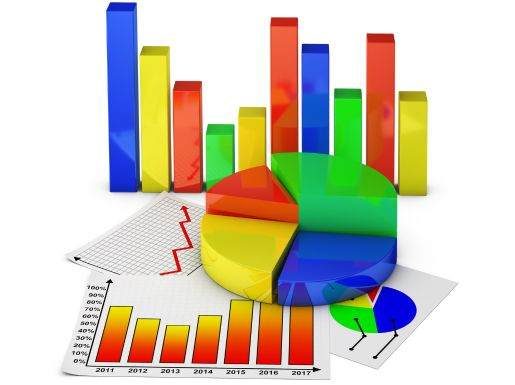Unlock the Potential of SEO: How Infographics for SEO Can Elevate Your Rankings

Robert Connor
Last Updated January 29, 2025
Introduction
"Unlock the Potential of SEO: How Infographics Can Elevate Your Rankings" is a comprehensive guide that delves into the power of infographics in boosting your website's search engine rankings. In this post, we will explore the impact of infographics on SEO and how they can effectively elevate your online visibility and engagement.
Whether you are a business owner, marketer, or content creator, understanding the synergy between infographics and SEO is crucial for maximizing your digital presence and achieving sustainable growth. Join us as we uncover the strategies and best practices to leverage infographics for unparalleled SEO success.
- Why Infographics are Vital for Your SEO Strategy
- How to Optimize Infographics for Better SEO Results
- Exploring the Different Types of Infographics for Maximum Impact
- The Benefits of Integrating Infographics into Your Content Marketing Strategy
- Step-by-Step Guide to Creating Infographics That Drive SEO Success
- Are Infographics Still Effective in an Ever-Evolving SEO Landscape?
- Conclusion:
- FAQ'
,
,
Why Infographics are Vital for Your SEO Strategy
In today's digital landscape, the significance of infographics in shaping an effective SEO strategy cannot be overstated. Infographics serve as powerful visual assets that not only enhance the aesthetic appeal of your content but also play a pivotal role in driving engagement and attracting backlinks.
By presenting complex information in a visually compelling and easily digestible format, infographics have the potential to captivate your audience and convey valuable insights that resonate with both users and search engine algorithms. Incorporating infographics into your SEO strategy can amplify the impact of your content, leading to improved rankings, increased traffic, and ultimately, greater online visibility.
Boosting Your Website’s SEO with Visual Content
Visual content, particularly infographics, has emerged as a game-changer in SEO strategies. The utilization of visually captivating elements can significantly enhance your website's search engine rankings. By leveraging infographics, you can effectively elevate your online visibility and engagement, thereby driving increased traffic to your site. These visual assets not only enhance the aesthetic appeal of your content but also play an important role in attracting backlinks and conveying valuable insights. The synergy between infographics and SEO is crucial for optimizing your digital presence. Incorporating visually compelling elements into your content can amplify its impact, resulting in improved rankings and greater online visibilityInfographics in SEO: More Than Just Eye-Candy
Infographics in SEO are much more than just eye-candy; they are powerful tools that can significantly elevate your website's search engine rankings and drive increased traffic. In the current digital environment, the combination of infographics and SEO is essential for enhancing your online visibility and engagement. These visually captivating elements not only enhance the aesthetic appeal of your content but also play an important role in conveying valuable insights and attracting backlinks.The Role of Infographics in Enhancing Search Engine Rankings
When it comes to enhancing search engine rankings, the role of infographics cannot be overstated. Infographics are highly effective visual tools that not only boost the visual appeal of your content but also play a crucial role in increasing engagement and attracting backlinks. By presenting complex information in a visually compelling and easily digestible format, infographics have the potential to captivate your audience and convey valuable insights that resonate with both users and search engine algorithms. Incorporating infographics into your SEO strategy can amplify the impact of your content, leading to improved rankings, increased traffic, and ultimately, greater online visibility.
,
,
,
,
How to Optimize Infographics for Better SEO Results
Optimizing infographics for better SEO results is a multifaceted endeavor that requires strategic planning and meticulous execution. To harness the full potential of infographics in elevating your website's search engine rankings, it's essential to consider various aspects, including design, relevance, and distribution.
Firstly, focus on creating visually compelling and informative infographics that resonate with your target audience. This involves meticulous attention to design elements such as color schemes, typography, and data visualization techniques. Additionally, ensure that your infographics are relevant to your industry and provide valuable insights that address the needs and interests of your audience.
Once created, strategically distribute your infographics across relevant platforms and leverage social media channels to maximize their reach and impact. By optimizing infographics in these ways, you can effectively enhance your SEO results and solidify your online visibility.
Utilizing Keywords in Your Infographic for SEO Gains
When it comes to optimizing your infographics for SEO gains, strategically utilizing keywords is paramount. Incorporating relevant keywords into your infographic's title, headings, and descriptions can significantly enhance its visibility and impact on search engine rankings. By conducting thorough keyword research and identifying the most pertinent terms and phrases related to your content, you can effectively align your infographics with the search intent of your target audience. Furthermore, integrating keywords seamlessly into your infographic's narrative and visual elements can reinforce its relevance and authority, thereby attracting organic traffic and fostering a stronger digital footprint. Remember, thoughtful keyword integration is an essential component in unlocking the full potential of your infographics for SEO success.Incorporating Alt Text in Infographics to Improve Visibility
Incorporating alt text in infographics is a crucial strategy for improving their visibility and accessibility. Alt text, also known as alternative text, is a concise description of the content and function of an image. When applied to infographics, alt text serves as a textual alternative that can be read by screen readers, providing accessibility to visually impaired individuals. Moreover, alt text plays a significant role in search engine optimization (SEO) by allowing search engines to understand and index the content of infographics. By including relevant keywords and descriptive phrases in the alt text, you can enhance the discoverability of your infographics and improve their visibility in search engine results pages. The strategic utilization of alt text in infographics is a valuable practice for maximizing their impact and ensuring inclusivity in online content.Link Building Through Informative and Shareable Infographics
Link building through informative and shareable infographics is a strategic approach that can significantly enhance your website's search engine rankings and amplify its online visibility. By creating visually compelling and informative infographics, you can attract backlinks and drive engagement, thereby strengthening the authority and relevance of your content. These shareable visual assets not only serve as eye-catching elements but also convey valuable insights that resonate with both users and search engine algorithms. Leveraging infographics for link building involves strategically disseminating them across relevant platforms, encouraging social sharing, and fostering collaborations with influencers and industry peers. This approach can effectively expand your reach, attract organic traffic, and solidify your digital presence with high-quality backlinks.
,
,
,
,
Exploring the Different Types of Infographics for Maximum Impact
 Exploring the different types of infographics for maximum impact is a multifaceted endeavor that requires a keen understanding of visual storytelling and data presentation. Infographics come in various forms, each with its unique strengths and applications.
From statistical infographics that showcase data trends and correlations to informational infographics that convey step-by-step processes and explanatory content, the diversity of infographics allows for versatile and engaging storytelling.
Additionally, comparison infographics enable side-by-side analysis of contrasting elements, while timeline infographics chronologically depict historical events or project milestones.
By exploring the different types of infographics and their respective strengths, you can strategically leverage visual storytelling to maximize impact and effectively communicate complex information.
Exploring the different types of infographics for maximum impact is a multifaceted endeavor that requires a keen understanding of visual storytelling and data presentation. Infographics come in various forms, each with its unique strengths and applications.
From statistical infographics that showcase data trends and correlations to informational infographics that convey step-by-step processes and explanatory content, the diversity of infographics allows for versatile and engaging storytelling.
Additionally, comparison infographics enable side-by-side analysis of contrasting elements, while timeline infographics chronologically depict historical events or project milestones.
By exploring the different types of infographics and their respective strengths, you can strategically leverage visual storytelling to maximize impact and effectively communicate complex information.
Making the Right Choice: Types of Infographics That Attract More Viewers
When it comes to choosing the right type of infographics to attract more viewers, it's essential to consider the diverse range of options available. Infographics serve as powerful visual tools that can captivate audiences and convey complex information effectively. Understanding the different types of infographics and their unique strengths is crucial for maximizing their impact on attracting viewers. From statistical infographics that showcase data trends to comparison infographics that enable side-by-side analysis, the variety of infographics allows for versatile and engaging storytelling. Furthermore, exploring informational infographics that convey step-by-step processes and timeline infographics that chronologically depict events can offer compelling options for attracting more viewers and enhancing engagement.Understanding the Purpose Behind Different Infographic Styles
Understanding the purpose behind different infographic styles is essential for maximizing their impact and engaging your audience effectively. Infographics come in various forms, each tailored to convey specific types of information and engage viewers in distinct ways. Statistical infographics demonstrate data trends and correlations, while informational infographics convey step-by-step processes, providing a versatile and engaging range of storytelling styles. By comprehending the unique strengths of each style, you can strategically choose the right type of infographic to convey your message and captivate your audience with visual storytelling.
,
,
,
,
The Benefits of Integrating Infographics into Your Content Marketing Strategy
Integrating infographics into your content marketing strategy offers a myriad of benefits that can significantly enhance your digital presence and audience engagement. Infographics serve as powerful visual assets, elevating the aesthetic appeal of your content while conveying valuable insights in a visually compelling and easily digestible format.
By strategically incorporating infographics, you can captivate your audience, attract backlinks, and bolster your website's SEO rankings.
This strategic integration of infographics can lead to increased traffic, improved rankings, and heightened online visibility, ultimately contributing to the sustainable growth of your digital footprint.
Embracing infographics as a core element of your content marketing strategy can amplify the impact of your content and solidify your position in the digital landscape.
Infographics as a Powerful Tool for Enhancing Brand Awareness
Infographics serve as a powerful tool for enhancing brand awareness, offering a visually compelling and easily digestible format to convey valuable insights and captivate your audience. By strategically incorporating infographics into your content marketing strategy, you can elevate the aesthetic appeal of your content and attract backlinks, ultimately bolstering your website's SEO rankings. Additionally, infographics can lead to increased traffic, improved rankings, and heightened online visibility, contributing to the sustainable growth of your digital footprint. With their diverse range of styles and unique strengths, infographics enable you to choose the right type to effectively convey your message and engage your audience in distinct ways.How Infographics Facilitate Complex Information Presentation
Facilitating the presentation of complex information, infographics serve as powerful tools in SEO, enhancing the aesthetic appeal of your content and conveying valuable insights. The collaboration of infographics and SEO is essential for maximizing online visibility and engagement. Incorporating infographics into your SEO strategy can amplify the impact of your content, leading to improved rankings and ultimately, greater online visibility. The role of infographics in enhancing search engine rankings cannot be overstated, as they play an important role in driving engagement and attracting backlinks.Infographics: A Secret Weapon for Your Content Marketing Mix
Infographics serve as a secret weapon in your content marketing mix, offering a visually compelling and easily digestible format to convey valuable insights and captivate your audience. By strategically incorporating infographics into your content marketing strategy, you can elevate the aesthetic appeal of your content and attract backlinks, ultimately bolstering your website's SEO rankings. Additionally, infographics can lead to increased traffic, improved rankings, and heightened online visibility, contributing to the sustainable growth of your digital footprint. With their diverse range of styles and unique strengths, infographics enable you to choose the right type to effectively convey your message and engage your audience in distinct ways.
,
,
,
,
Step-by-Step Guide to Creating Infographics That Drive SEO Success
 Here is a simple list for creating infographics that drive SEO success:
1. Determine your target audience and topic.
2. Research and gather relevant data and statistics.
3. Choose a compelling and visually appealing design.
4. Use a reliable infographic creation tool or hire a designer.
5. Incorporate relevant keywords and optimize the infographic title and description for SEO.
6. Include a shareable embed code for easy sharing on other websites.
7. Promote the infographic on social media, industry forums, and relevant websites to drive traffic and backlinks.
Here is a simple list for creating infographics that drive SEO success:
1. Determine your target audience and topic.
2. Research and gather relevant data and statistics.
3. Choose a compelling and visually appealing design.
4. Use a reliable infographic creation tool or hire a designer.
5. Incorporate relevant keywords and optimize the infographic title and description for SEO.
6. Include a shareable embed code for easy sharing on other websites.
7. Promote the infographic on social media, industry forums, and relevant websites to drive traffic and backlinks.
Finding the Right Stories and Data for Your Infographic
When it comes to creating impactful infographics, finding the right stories and data is an essential first step that can significantly shape the effectiveness and resonance of your visual assets. The process of identifying compelling narratives and relevant data sets involves meticulous research and thoughtful consideration of your target audience's interests and needs. By delving into diverse sources and conducting a thorough analysis, you can uncover insightful stories that resonate with your audience and compelling data that adds depth and credibility to your infographics. This strategic approach to story and data selection lays a strong foundation for creating infographics that effectively captivate and inform your audience, ultimately contributing to the success of your visual content.From Concept to Creation: Tools and Tips for Making Effective Infographics
Embarking on the journey from concept to creation of effective infographics entails a blend of creativity, strategic planning, and the adept utilization of specialized tools. This multifaceted process involves conceptualizing engaging narratives, identifying compelling data, and selecting the most suitable infographic type to effectively convey your message. To bring your vision to life, leveraging user-friendly design tools and comprehensive data visualization software can amplify the impact of your infographics, enabling you to craft visually compelling and informative visual assets. Furthermore, staying updated on design trends and best practices, alongside incorporating user feedback, is important for refining your infographics and ensuring their resonance with your audience.Optimizing Your Infographic for SEO and Social Media Platforms
Optimizing your infographic for SEO and social media platforms is a multifaceted endeavor that requires a meticulous approach and strategic implementation. It involves careful consideration of various elements, from crafting visually appealing designs to ensuring that your infographics convey valuable insights that resonate with your target audience.. By focusing on factors such as color schemes, typography, and data visualization techniques, you can enhance the aesthetic appeal of your infographics and effectively capture the attention of viewers.dience in distinct ways. Additionally, strategic distribution across relevant platforms and leveraging social media channels can maximize their reach and engagement, ultimately contributing to enhancing your website's search engine rankings and solidifying your digital presence.
,
,
,
,
Are Infographics Still Effective in an Ever-Evolving SEO Landscape?
In the ever-evolving SEO landscape, the effectiveness of infographics remains a pertinent topic of discussion. As search engine algorithms continue to prioritize user experience and content relevance, the role of infographics in driving engagement and enhancing online visibility is of significant interest.
With their visually compelling and easily digestible format, infographics have the potential to captivate audiences and resonate with both users and search engine algorithms.
However, in a landscape characterized by dynamic algorithm updates and evolving user behaviors, it is essential to assess the continued effectiveness of infographics as a core element of content marketing and SEO strategies.
Infographics in the Age of Visual Content Overload
In the age of visual content overload, the role of infographics in capturing the audience's attention and conveying complex information is more crucial than ever. The inundation of digital platforms with an abundance of visual content poses a challenge for marketers and content creators to stand out amidst the sea of visuals. Infographics, with their visually compelling and easily digestible format, have the potential to cut through the noise and resonate with audiences. However, in this landscape of saturation, understanding how to strategically leverage infographics to maximize impact and effectively communicate amidst visual content overload becomes paramount.The Ongoing Relevance of Infographics in SEO
The ongoing relevance of infographics in SEO is a subject of considerable interest, particularly in the context of the ever-evolving digital landscape. As search engine algorithms continue to prioritize user experience and content relevance, the role of infographics in driving engagement and enhancing online visibility remains a pertinent topic of discussion. In this age of visual content overload, where standing out amidst the sea of visuals is a challenge, the visually compelling and easily digestible format of infographics holds the potential to cut through the noise and resonate with audiences. However, it is essential to assess the continued effectiveness of infographics as a core element of content marketing and SEO strategies in this dynamic environment.Case Studies: Successful SEO Campaigns Using Infographics
Case studies of successful SEO campaigns using infographics provide valuable insights into the strategic integration of visual assets to drive online visibility and audience engagement. These comprehensive analyses showcase the tangible impact of infographics in enhancing search engine rankings and attracting organic traffic. By looking into the methodologies and outcomes of these campaigns, marketers can glean practical strategies and best practices for leveraging infographics as potent tools in their SEO endeavors. Through meticulous examination of these case studies, a deeper understanding of the pivotal role that infographics play in amplifying the reach and resonance of content within the context of SEO can be attained.
,
,
,
,
Conclusion:
Infographics are a powerful and versatile tool for enhancing brand awareness, conveying complex information, and driving SEO success. By strategically integrating infographics into your content marketing strategy, you can elevate the aesthetic appeal of your content, attract backlinks, and ultimately bolster your website's SEO rankings.
The diverse range of infographic styles allows you to choose the right type to effectively convey your message and engage your audience in distinct ways. From concept to creation, infographics offer a visually compelling and easily digestible format to captivate your audience and convey valuable insights.
In the ever-evolving SEO landscape and age of visual content overload, infographics continue to play a crucial role in driving engagement and enhancing online visibility. By optimizing infographics for SEO and social media platforms, and by leveraging case studies of successful campaigns, marketers can harness the potential of infographics to amplify the reach and resonance of their content.
With their ongoing relevance and proven effectiveness, infographics remain a valuable asset in the digital marketing toolkit.
,
,




